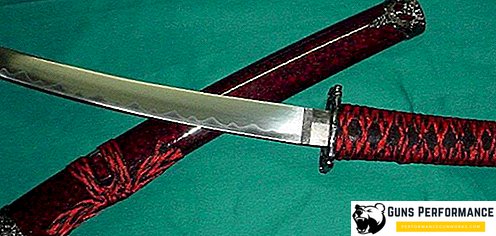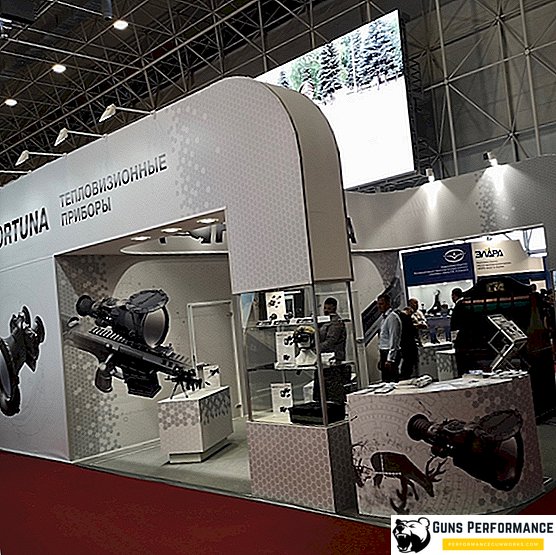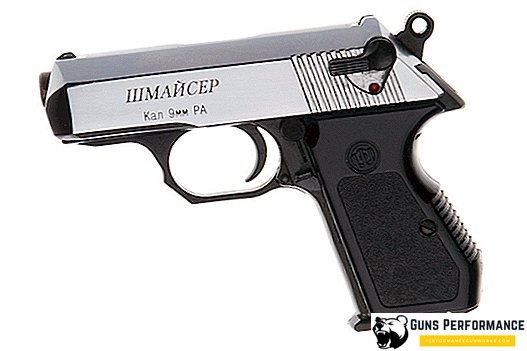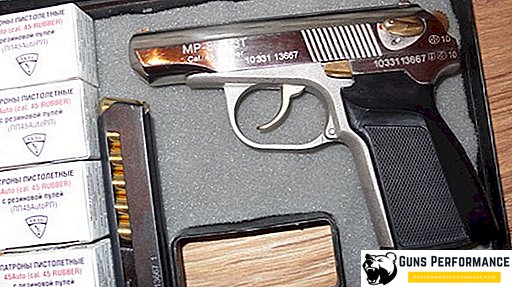
Tanto is a type of Japanese short-bladed weapon that, along with katana and wakizashi, was part of the standard set of samurai weapons. According to the European classification, tanto (judging by its size) is a typical dagger, but the Japanese themselves consider it a real sword. The phrase "tan then" from the Japanese and translates: "short sword."
In the literature, tanto is often referred to as a dagger or samurai combat knife. Although the name "dagger" for this weapon is not very suitable. So it is often referred to as domestic authors, forgetting that the distinctive feature of daggers is double-sided sharpening. Tanto - as well as katana and wakizashi - has a cutting edge on one side only. From its large counterparts, it differs only in size.

In modern Japan, tanto, made according to old technologies (as well as some other types of cold arms), are considered the cultural heritage of the nation. In order to engage in the manufacture of such weapons, you need to study for a long time, and then get a special license. Since the end of the war in Japan, about 600 such permits have been issued. Tanto, which were mass produced during the Second World War for the needs of the army by the factory method, do not fall into the category of national wealth and are subject to destruction.
It should be noted that the Japanese themselves do not perceive tantто as an ordinary knife. All that was included in the warrior's weapon set was never used for economic purposes. Just a knife that is used in everyday life, in Japan, is called jamono.
At the same time, today this word has another meaning: this is also the name of the blade form with a characteristic sharp break of the cutting edge to the point, which is very often used by manufacturers of combat and tactical knives. Since the general public has little knowledge of what a tanto sword is, almost anything can be hidden under this name. The so-called tanto knife or American tanto is just a knife (it can be of different size and shape), made in the style of a Japanese sword. Sometimes even folding knives are called that. Such weapons today are very popular in the USA, Europe and Russia and do not produce "tanto knives" unless they are very lazy manufacturers.

Description
The classic tanto has a slightly curved blade with one-sided sharpening (double-edged specimens are found, but extremely rarely) and are from 20 to 30 cm long. To be more precise, the dimensions of its blade should not exceed one syaku - Japanese measure of length equal to 30.3 see. Otherwise, it will not be a tanto, but a wakizashi.
The total length of tanto, as a rule, is 35-50 cm. For the manufacture of weapons used steel tamahagane. The tanto blade is usually flat (made in the style of hira-zukuri), but sometimes there are instances with a stiffener. The handle of this weapon is removable, it is attached to the shank using a special bamboo stud - mekugi. There is a round guard called tsuba.
In fact, today there are a large number of types of sword tanto, which differ in shape and purpose. Different schools of martial arts used their versions of this weapon. Each of them has its own name.

Story
The first mention of tanto dates back to the beginning of the Heian era (this is somewhere in the 10th century AD). At that time this weapon had the most unassuming appearance, without any decorations or other signs of artistry. However, already during the war of Tyro and Minamoto, some copies of the tanto became a real work of art, by this time the feudal culture of the samurai reached its peak. By the end of the Heian era, a warrior's weapon set usually consisted of naginata, bow, long sword, and tanto.
Even more attention was paid to tanto during the Kamakura era, samurai daggers that time are characterized by excellent quality and excellent design. This historical period can be safely called the heyday of tanto. It was at this time that the legendary Japanese gunsmith Yoshimitsu, who specialized in making such blades, worked.
In the era of Shinto ("new swords"), the value of tanto as a military weapon is sharply reduced, which leads to a drop in the production of these daggers. In the Edo era, they are almost completely out of use, they are no longer worn. It was only during the Meiji Revolution that the aristocracy arose in the old traditions, and the Japanese tantто knife experienced a rebirth.

Today, tanto, made according to traditional technologies, are considered the cultural heritage of the nation and are protected by law. However, the carrying of these weapons is prohibited.
Application
The medieval Japanese warrior was armed with three different swords (katana, wakizashi and tanto), which differed from each other only in their size. By design, the classic tant тан is no different from its longer counterparts. It was usually worn around the belt on the right side.
As mentioned above, tanto was never used for business purposes, it was a real military weapon. Usually it was used to finish the defeated enemy, cutting off the heads. However, most often this knife served to commit the traditional Japanese suicide - hara-kiri. And it was used for this purpose not only by male warriors, but also by women, and sometimes even by children. A textbook in this respect is the story of the siege of the Japanese Fushimi castle, in which the whole family of its owner (including children) committed suicide in order not to fall into the hands of the enemy. Later this case became an example of true samurai devotion and honor.

In different historical periods, there were variations of tanto, which were intended to perform certain functions. So, for example, a three-sided tanto yorodosi was intended to pierce enemy armor, and hasivari had a blade with a special hook that could intercept or even break an enemy sword.
Moreover, unlike the katana, not only samurai could wear tanto. It was used by artisans, merchants, monks and other categories of citizens who often had to travel.
Currently, this weapon is used during the solemn ceremony of marriage of members of the imperial family.
Today, tanto is widely used in various martial arts schools. Naturally, for training or training battles, they use blunt weapons or, generally, their plasterboards made of wood or plastic.
Tanto Varieties
There are a large number of varieties of tanto, each of them has its own name and specialization.

Hamidashi. This knife is practically no different from the classic tanto, except for a very small guard-tsuba.
Aiguchi (or yakutti). The "civilian" version of tanto, which has the same shape and dimensions of the blade as the classic weapon, but is completely devoid of not only the guards, but also the traditional braid for swords on the handle.
Cubikiri. This dagger differs from the classical one in the almost complete absence of a pronounced point and sharpening. In cubicri usually the cutting edge is on the inside of the blade or it has a double-edged sharpening. There are several versions of how this knife was used. In the literal translation of "cubikir" means "head cutter." It is possible that this blade was carried by samurai servants in order to collect ominous trophies on the battlefield - the heads of defeated enemies.
Kusungobu. This is a ritual dagger that was used only for one purpose - performing seppuku or hara-kiri.
Kaiken A kind of tanto that women most often wore and used for self-defense. The weapon was hidden in the sleeve or in the belt.
Second birth
It is likely that the tanto would remain one of the types of traditional Japanese weapons, known only to specialists and lovers of Eastern exoticism, if in the last quarter of the last century the West did not overwhelm the fashion for large and brutal knives. Moreover, the general public was very quickly tired of the blades of the traditional form, and the manufacturers turned their attention to the East. In addition, it was during this period that the real boom of oriental martial arts began in the USA and Europe.

For the first time, the American company Timberlein drew attention to the Japanese tantто, which produced a series of knives called Specwar. The market took the novelty with a bang, and since then the name "tantто" means not the traditional samurai cold weapon, but the name of the knives, more or less stylized as Japanese blades.
Currently, knives in the style of "tanto" are produced by almost all well-known manufacturers of cold weapons. Modern "tanto" more or less resemble the original, but, of course, have no relation to the ancient Japanese weapons. It should be noted that among these knives can be found very worthy copies, interesting in design and characterized by high quality.
However, it should be noted, and certain "excesses" that allow manufacturers in pursuit of the spectacular appearance of their products. Knives "tanto" often do with a straight butt bevel, which reduces its penetrating ability. Another deviation from the original is the direct form of the blade, which can often be seen on the so-called American tanto. Such a design is possible and makes the knife more brutal, but significantly reduces its cutting properties. Real Japanese tantas always had a curved blade, and therefore they cut them perfectly.

We should not forget that the shape and size of any cold weapons is the quintessence of centuries-old experience of gunsmiths and warriors, so before you change something you need to think ten times. Well, consumers should not be “led” to the fancy shapes of knives, and first of all pay attention to their functionality.












